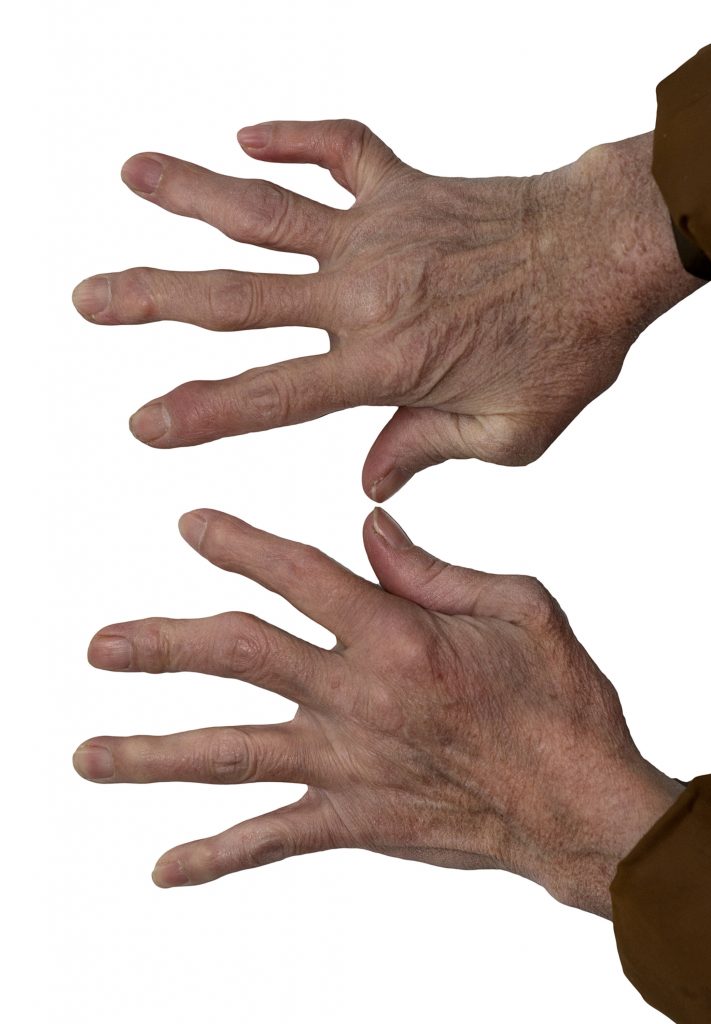Referral
There are several ways in which participants may be referred to the A3BC. The most likely way will be through their treating rheumatologist, who is practicing at an ethics-approved A3BC site and who is an A3BC investigator. Other routes of referral include:
a. Self-referral: Patients may discover the A3BC online or through other material and contact the A3BC to participate.
b. Patient familiarisation programs: Patients may discover the A3BC through material offered to them with a patient familiarisation program (run by pharmaceutical companies) and contact the A3BC to participate. Patients are referred to these programs via their treating rheumatologist.
In circumstances such as scenarios (a) and (b) above or any situation where the treating rheumatologist is not at an ethics-approved A3BC site, steps will to be taken to confirm the participant’s diagnosis and the treating rheumatologist can choose whether they would like to start the process of getting A3BC ethics and governance approval at their site to conduct on-site recruitment and sample collection or simply act in a referral-to-approved site capacity (more suitable for rheumatologists in private practice).
In these cases, the treating rheumatologist will be required to gain either associate investigator status (where they are affiliated with the A3BC ethics-approved site) or otherwise honorary research associate/external researcher status at the site before communicating their patient’s diagnosis and contact details securely to the site A3BC team. Once eligibility is confirmed, the patient may complete a Permission to Contact (PTC) form and consent through the approved site in order to enter the A3BC study.
Positive pathology result
Another referral route for A3BC entry is where eligible participants are identified by an immunologist or pathologist who has been referred a patient (by a rheumatologist or GP) who is found to meet A3BC eligibility criteria based on a specific diagnostic test. Following discovery of a positive result by the immunologist/pathologist, they will send the ordering specialist/GP an email/letter asking them to contact such positive patients and refer them to the A3BC.
Disease Criteria
Once a participant is referred, the next point of this process is for treating rheumatologists or other relevant specialists to confirm the individual meets the following A3BC disease-specific selection criteria.
 RA
RA
Inclusion Criteria
RA after symptom onset
- Diagnosed with RA under the 2010 Rheumatoid Arthritis Classification Criteria published by the American College of Rheumatology (Group 1).
RA before symptom onset
- Participants without RA who have at-risk RF and/or ACPA antibodies.
JIA
Inclusion Criteria
- Children and adolescents aged 0-18 years.
- Diagnosis of JIA (under ILAR Classification)
PsA
Inclusion Criteria
- At least 18 years of age
- Diagnosis of PsA under the CASPAR Classification System
AS, nr-axSpA or Peripheral SpA
Inclusion Criteria
- At least 18 years of age
- Diagnosis of AS under the modified New York Classification System 81 or nr-axSpA / Peripheral SpA under the ASAS Classification Criteria
Vasculitis
Inclusion Criteria
- Diagnostic classification will be according to EULAR/ACR Criteria for each subtype of vasculitis:
- Small blood vessel vasculitis – Granulomatosis with polyangiitis (Wegener’s granulomatosis), Eosinophilic granulomatosis with polyangiitis (Churg-Strauss syndrome), Goodpasture’s syndrome (Anti-glomerular basement membrane disease), Henoch-Schonlein purpura (IgA Vasculitis), Microscopic polyangiitis, Cogan’s disease, Cryoglobulinaemic vasculitis and Urticarial vasculitis
- Medium blood vessel vasculitis – Behcet’s disease, Central nervous system vasculitis, Kawasaki disease, Polyarteritis nodosa
- Large blood vessel vasculitis – Giant cell (temporal) arteritis, Takayasu arteritis, Polymyalgia rheumatica
- In addition to EULAR/ACR Criteria, subtypes of anti-neutrophil cytoplasmic antibody (ANCA)-associated vasculitis will be identified according to antibody profiles e.g. Myeloperoxidase (MPO) or proteinase 3 (PR3) positive blood test (ELISA detection)
Idiopathic Inflammatory Myopathies
Inclusion Criteria
- Diagnosis under the 2017 EULAR/ACR IIMs Criteria Adult and Juvenile Idiopathic Inflammatory Myopathies
Sjogren’s Syndrome
Inclusion Criteria
- Adults diagnosed under the 2016 EULAR/ACR Sjogren’s Syndrome Criteria or the American-European Consensus Sjögren’s Classification Criteria
All Diseases – Microbiome Collection (faeces and saliva) – Exclusion Criteria
Cases and Controls: Given the inherent variability in microbiome populations and the myriad external factors which are thought to affect human microbial populations, the A3BC will employ project-specific exclusion criteria to ensure known confounding variables are minimised, or carefully documented to adjust for in planned microbiome-related analyses. Microbiome research is a rapidly evolving field and therefore these criteria will be updated as levels of evidence evolve. Particular confounding variables to be minimised/documented in both faecal and saliva collections include antibiotic use, use of commercial probiotic/prebiotic products and infections (all in the last 3 months).
.
